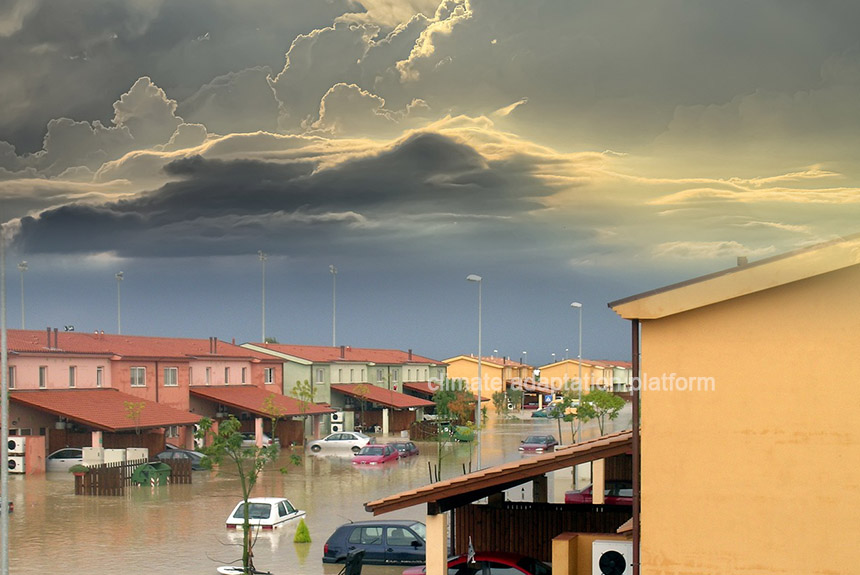Have you ever heard of the Atmospheric Rivers? They have been in the headlines recently.
They are associated with record-breaking rainfall, causing catastrophic floods in California and other parts of the world, like Australia, New Zealand, Canada, and Iran, and infrequently in European countries like the UK, France, and Norway.
However, atmospheric rivers typically occur in the extratropical North Pacific/Atlantic, southeastern Pacific, and South Atlantic oceans, often making landfall on the west coasts of North and South America.
Rivers in the sky
Imagine a river, not on the ground, but in the sky. That’s what an atmospheric river is. It is a narrow corridor or filament of concentrated water vapour transported in the atmosphere. These ‘rivers in the sky’ are typically more than ~2,000 km (1,245 miles) long, less than 1,000 km (620 miles) wide, and about 3 km (1.8 miles) deep, as observed from satellites.
Atmospheric rivers start forming from the equator as warm water vapour rises to the atmosphere. Moist air forms like a narrow band and flows from the tropics to mid-latitude regions by atmospheric circulation. As they reach the coasts and flow inland over the mountains, the water vapour cools, condenses, and falls to the ground as rain or snow, creating an atmospheric river-driven storm.
Dangers and Benefits of Atmospheric Rivers
Atmospheric rivers are essential to the water cycle. They shift 90% of the air’s water vapour but cover less than 10% of the planet. A big atmospheric river can move a quarter of a million tonnes of water each second past a given point. If one gets big, it can be disastrous, bringing flooding, strong winds, and mudslides. In the mountainous regions, atmospheric rivers can bring warm and moist air that speeds up snowmelt, posing hazards to communities below.
However, ARs can also be beneficial in places like drought-stricken California—up to 50% of California’s annual precipitation can come from atmospheric rivers, bringing enough water to end a drought. A USGS research has found that 33%–74% of droughts on the West Coast between 1950 and 2010 were broken by the arrival of atmospheric river storms.
Another study published by the Geophysical Research Letters in October 2017 shows that atmospheric rivers contribute to about 22% to 50% of the available water sources. However, in several regions, ARs are linked with up to 80% of floods, but their absence can also increase the frequency of droughts by up to 90%.
Globally, the study finds that around 350 million are exposed to hydrological droughts in the absence of ARs. Regions where this behavior is observed include the Central Valley in California, the Missouri River in the U.S., the Canadian Shield, the Parana, the Iberian Peninsula, the Mediterranean coast of Europe, the Amur in Russia and China, the area around the Black Sea, north of Iran, and the Yellow River in Asia.
It is also in the Murray-Darling outlets in New Zealand, the Orange River of South Africa, and the Indus basin. By contrast, approximately 300 million people are exposed to additional flood risk due to the occurrence of ARs.
Areas with increased flood exposure are California, the Mississippi basin, the Parana River, the Iberian Peninsula, southern Iran, the Amur and Yangtze Rivers, and the Murray-Darling basins. The study suggests that improved understanding, modelling and prediction of how ARs influence hydrometeorological variability will benefit water managers, flood forecasters, and civil protection authorities.
Forecasting the Impacts of Atmospheric Rivers
Detecting atmospheric rivers in satellite observations has been challenging in the past due to the lack of information about a meteorological variable, the wind.
The study, “Evaluating the Representations of Atmospheric Rivers and Their Associated Precipitation in Reanalyses With Satellite Observations,” published in JGR Atmospheres on November 2023, presented results when they obtained an approximation of the three-dimensional wind field (3D) based on the spatial distribution of the temperature detected by the satellites. Combining the 3D wind data with the humidity observed by the satellite, the research team created a method to detect atmospheric rivers through satellite observations for the first time.
They developed a novel method to detect atmospheric rivers (ARs) using moisture and wind data from satellite observations. In the past, researchers relied heavily on reanalysis to study atmospheric rivers to arrive at a complete picture of past weather and climate. By comparing reanalysis data to satellite observations, the study aims to evaluate the accuracy of these models in simulating atmospheric rivers and their impacts on precipitation.
Source:
Rivers in the Sky: 6 Facts You Should Know about Atmospheric Rivers. (2021, December 14). USGS. Retrieved from https://www.usgs.gov/news/featured-story/rivers-sky-6-facts-you-should-know-about-atmospheric-rivers
Atmospheric Rivers. (2022, November 30). Earth Data. Retrieved from https://ghrc.nsstc.nasa.gov/home/micro-articles/atmospheric-rivers
Atmospheric Rivers Hit West Coast. (2023, January 25). National Environmental Satellite, Data, and Information Service. Retrieved from https://www.nesdis.noaa.gov/news/atmospheric-rivers-hit-west-coast#:~:text=Based%20on%20satellite%20observations%2C%20an,(3%20km)%20in%20depth.
Paltan, H., Waliser, D., Lim, W. H., Guan, B., Yamazaki, D., Pant, R., & Dadson, S. (2017). Global floods and water availability driven by atmospheric rivers. Geophysical Research Letters,44,10,387–10,395. https://doi.org/10.1002/2017GL074882
Detecting atmospheric rivers with satellite observations. (2024, February 19). Phys.Org. Retrieved from https://phys.org/news/2024-02-atmospheric-rivers-satellite.html
Weiming, M., et al. (2023). Evaluating the Representations of Atmospheric Rivers and Their Associated Precipitation in Reanalyses With Satellite Observations. Journal of Geophysical Research: Atmospheres. DOI: 10.1029/2023JD038937
Reid, K. (2022, August 4). Atmospheric rivers in Australia. Climate Extremes. Retrieved from https://climateextremes.org.au/atmospheric-rivers-in-australia/
Dettinger, M. D. (2013). Atmospheric rivers as drought busters on the US West Coast. Journal of Hydrometeorology, 14(6), 1721-1732.



Leave a Reply